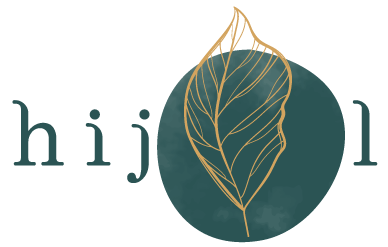
The Philodendron 'Rojo Congo' is a striking hybrid plant known for its dramatic and bold appearance. Unlike many vining philodendrons, it has an upright, non-climbing growth habit, forming a lush, bushy mound. Its name, "Rojo Congo," refers to its distinctive new foliage, which emerges in a vibrant reddish-burgundy color before maturing into a deep, glossy green. The leaves are large, thick, and heart-shaped, giving the plant a tropical and robust presence. This plant is relatively easy to care for, thriving in bright, indirect light and well-draining soil. Its tolerance for lower light and its air-purifying qualities make it a popular and impressive choice for adding a touch of bold, architectural greenery to indoor spaces.

The painted-leaf begonia, also known as the rex begonia (Begonia rex-cultorum), is a stunning and popular group of hybrid plants celebrated for their incredibly varied and colorful foliage. Unlike other begonias prized for their flowers, the rex begonia is all about its leaves, which can display a spectacular array of colors, including shades of green, silver, red, purple, and black. Their patterns are equally diverse, featuring spirals, swirls, stripes, and blotches, often with a metallic or velvety texture. These plants are native to the moist, forested regions of eastern Asia and are typically grown as houseplants, where they can add a dramatic and artistic touch to any indoor space. They thrive in high humidity and bright, indirect light, and prefer to have their soil stay evenly moist but not waterlogged to prevent root rot.

The Moon Cactus is a popular houseplant that is actually a composite plant made of two different cacti grafted together. The colorful, spherical top, known as the scion, is a mutant cultivar of Gymnocalycium mihanovichii that lacks chlorophyll, giving it its vibrant red, orange, or yellow hues. Because it cannot photosynthesize, this colorful top is grafted onto a green rootstock (often Hylocereus species), which provides the necessary chlorophyll and nutrients for the whole plant to survive. These low-maintenance succulents thrive in bright, indirect light and well-draining soil, with minimal, infrequent watering.

Homalomena rubescens is a popular tropical plant from the Araceae family, highly valued for its attractive foliage. Native to Bangladesh, Assam, East Himalayas, and Myanmar, it is commonly known as the 'Queen of Hearts' or 'Shield Plant'. Its most distinctive features are its glossy, waxy, heart-shaped, deep green leaves set atop striking reddish or maroon-tinted stems (petioles). It makes an excellent indoor plant because it tolerates lower light conditions and helps to purify the air. This plant prefers a humid environment and moist soil, but must have good drainage to prevent root rot. Be aware that the plant's sap contains calcium oxalate crystals and is considered toxic if ingested.

The Madagascar Dragon Tree (Dracaena marginata), also known as the Red-edged Dracaena, is a highly popular and resilient houseplant native to Madagascar. It's distinguished by its slender, often bare stems topped with tufts of narrow, sword-like leaves that are deep green with striking red or pink edges. A slow-growing plant, it can eventually reach several feet tall, making it an excellent focal point indoors. The Dragon Tree is favored for its tolerance of low light and dry conditions, making it relatively easy to care for, though it thrives best in bright, indirect light and well-draining soil. However, it's important to note that it is toxic to pets if ingested

The Gold Dust Dracaena, scientifically known as Dracaena surculosa (or sometimes Dracaena godseffiana), is a popular, slow-growing tropical houseplant native to West Africa. It is instantly recognizable by its striking, oval-shaped glossy green leaves that are generously speckled with yellow or creamy-white spots, giving it the appearance of being sprinkled with "gold dust." Unlike many other Dracaena species, it has a bushy, branching growth habit, often leading to the common name "Japanese Bamboo." It thrives in bright, indirect light which helps maintain the vibrancy of its variegation, and prefers the top layer of its well-draining soil to dry out slightly between waterings, as it is particularly sensitive to overwatering and root rot.

The Ornamental Sweet Potato Vine (Ipomoea batatas) is a popular annual plant prized for its stunning foliage and trailing habit. Unlike its edible cousin, this variety is grown purely for decoration, featuring leaves in vibrant shades of chartreuse, deep purple, bronze, or variegated patterns. Its vigorous, cascading vines make it a perfect "spiller" in container gardens, hanging baskets, and as a colorful groundcover, thriving best in warm weather and full to partial sun.

The Haworthiopsis reinwardtii, often called the Zebra Wart, is a unique, slow-growing succulent native to South Africa. It is prized for its columnar, upright stems covered in fleshy, spirally-arranged leaves that are adorned with distinct white, raised bumps (tubercles), giving it a striped, textured appearance. A low-maintenance houseplant, it prefers bright, indirect light and well-draining soil, making it a perfect, resilient addition to any indoor succulent collection.

The Dwarf Umbrella Tree (Schefflera arboricloa), also known as the Umbrella Plant, is a popular tropical houseplant native to Taiwan and Hainan. It is cherished for its glossy, dark green leaves that grow in circular clusters, resembling the spokes of an umbrella. This resilient evergreen shrub is favored for its ease of care, thriving in bright, indirect light and requiring thorough watering only when the topsoil has dried out. While it adds attractive foliage and helps filter indoor air, gardeners should note that all parts of the plant are mildly toxic if ingested by pets or humans due to calcium oxalate crystals.
